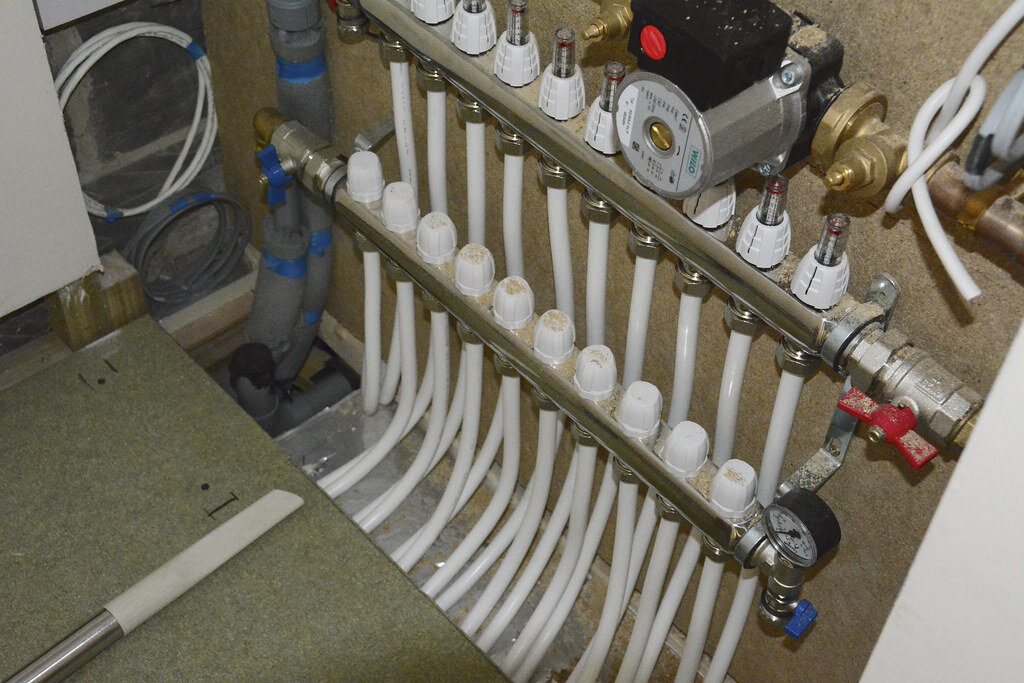Underfloor Maintenance & Installation Services
What is Underfloor heating?
Solar Photovoltaic (PV) systems provide free electricity to your tenants, helping to combat fuel poverty but they also generate potentially lucrative returns on investment through subsidies and power purchase agreements.
Solar PV systems consist of several photovoltaic cells built into a solar module, of which many are installed upon a roof. The modules are connected via DC cabling and feed back to inverters which transform the DC power to AC electricity ready for the property to consume. The generated power is metered and used as the primary source of power to the building, with any excess demand being topped up by the national grid, any excess supply of solar power is exported back to the grid.
With climate change continuing to manifest globally through devastating floods, droughts, and wildfires, the need for solar PV systems increases. In Britain, renewables have generated more power than coal and other fossil fuels. A decade ago, just 3% of the country's electricity was generated from wind and solar. This year, renewables have supplied 37% of electricity compared to 35% for fossil fuels.
Unlike other energy sources, solar energy does not produce pollution nor emit harmful greenhouse gases. By switching to solar power, you can directly reduce CO2 emissions, help preserve valuable fossil fuels, and ensure a safe and liveable planet for future generations.
Why install Underfloor Heating?
Reduce electricity bills - Solar Photovoltaic systems produce FREE electricity meaning property owners can reduce their electricity bills by utilising this FREE electricity generated during daylight hours which therefore means purchasing less from the national grid year on year.
Easy way to meet building regulations - For builders or developer in the new build market, solar photovoltaic systems are a great way to help meet SAP targets, energy reports, The Code for Sustainable Homes, BREEAM ratings, Part L and local planning requirements such as the London Plan.
Reduce your carbon footprint - Solar PV generates renewable energy, meaning it doesn’t produce any harmful pollution. This technology is a way that each property can help towards protecting the environment and tackling climate change by utilising natural sustainable resources.
Why maintain Solar Photovoltaic Systems?
Solar PV systems have no moving parts, require low maintenance, and are made to last many years. This means many solar panel installation companies offer long warranties and maintenance packages as part of their system cost. That said, proper care and precautions are still necessary to ensure the longevity and year-round efficiency of your system.
During a solar PV routine maintenance, we’ll carry out a comprehensive check of all cracks and defects and conduct an electrical component test.
An engineer will check for potential issues such as:
● Broken glass, discoloration, or burn marks on solar panels
● Corrosion on electrical enclosures or the rack system
● Corrosion or erosion of system supports
● Excessive cracking or wear on the inverter
● Loose or exposed wiring
● Missing bolts
● Roof drainage issues
● Signs of pest infestation
● Vegetation growth on the roof
● Water damage from roof penetrations
Identify issues early
A specialist can identify any problems before they happen, saving you money on repair and solar PV reactive maintenance costs. With regular servicing, you can rectify any damage before the issue worsens.
Enhance safety
The sooner you resolve issues in your system, the lower the risk of accidents or injuries for your tenants and any electrical workers handling the distribution network.
Increase efficiency
Accumulated dirt, dust, bird droppings, grease or any other particles in the air can be detrimental to your PV panels. They can block sunlight, create hotspots, and decrease the efficiency of the system. Planned solar PV maintenance will keep unwanted dirt from the surface of the panels and ensure high performance.




